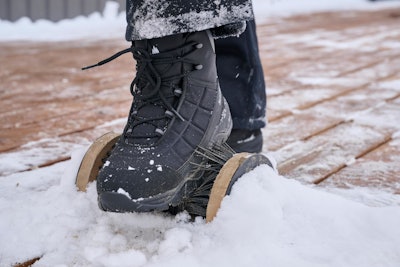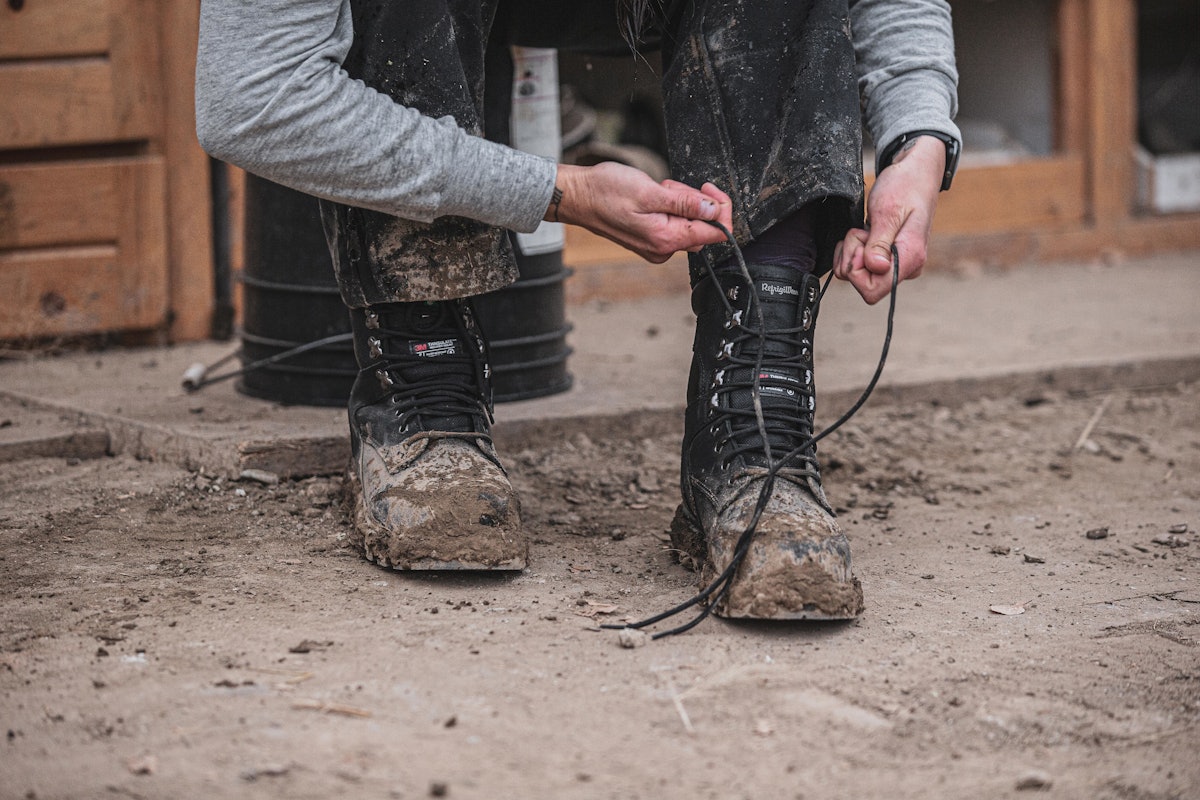Just like a tool belt and a trusty truck, a comfortable pair of safety toe work boots are a necessity for construction workers. Similar to that trusty truck, work boots need regular care and maintenance to make sure they last as long as possible.
Avoid Unnecessary Wear & Tear
To prolong the life of a work boot, avoid placing unnecessary pressure or friction on the boot. For example, using the toe of the boot to kick pallets or push heavy equipment can damage the outer materials and compromise safety toe caps that are designed to keep feet protected.
The laces of work boots are also subject to preventable wear and tear. Never treat lace-up work boots like a pull-on boot. Instead, untie and fully loosen the laces when putting work boots on or taking them off. This makes it easier to slide the foot in and out of the boot. Fully loosened laces are less likely to fray or snap so they won’t need such frequent replacement.
Replace Worn Insoles
Insoles wear out long before the rest of a work boot. Shock-absorbing materials in the insoles get compressed with extended wear or heavy use and are intended to be replaced periodically.
When construction workers notice their feet getting sore or feeling fatigued early in the work day, or if there are visual signs of wear, such as fraying or thin spots at the heels or toes, it’s time to replace the insole. Replacement insoles are inexpensive compared to replacing a pair of work boots. A new pair of insoles will improve the comfort of the boot and extend its serviceable life.
Replace Worn Outsoles
Some boots, such as those with welted soles, are designed to be re-soled. If the upper part of a work boot is in serviceable condition but the soles have worn-down treads or cracks, inquire with the boot manufacturer or a local shoe repair shop to see if replacing the sole can extend the life of the boot without compromising safety components, such as safety toe caps, electrical hazard protection, and puncture-resistant plates.
Rotate Your Work Boots
Another way construction workers can extend the life of a work boot is to rotate between two pairs. Rotating between boots mitigates wear on the interior from built-up moisture and constant friction with the sock. Rotating boots gives the first pair a chance to dry and air out from a sweaty day on the job while the worker wears the second pair. However, it is important to store the unworn pair properly in an area with good air circulation. Avoid direct sunlight and heat sources that can over-dry the boot and cause materials to crack.
Clean Your Work Boots
Dirt and construction-related chemicals can compromise the soles and upper materials of construction work boots. Proper cleaning can extend the life of leather and synthetic work boots.
Use a dry boot brush daily or weekly to remove dust, dirt, and debris. If work boots get especially dirty, or if they’re exposed to snow, ice, salt, or other chemicals, they need more thorough cleaning and conditioning.
Scrub Boot Soles Frequently
At the end of each day, before taking work boots off, construction workers should brush mud, dirt, and other debris off the boot. Then, wipe the sole across a floor-mounted boot scrubbing station to remove mud, gravel, or other debris stuck in the tread of the outsole.  RefrigiWear, Inc.
RefrigiWear, Inc.
Keeping the boot’s sole clear will prolong its life by preventing cracks and punctures that compromise its safety or water resistance. A clean and well-maintained sole also keeps construction workers safer on the job by maintaining optimum traction and preventing slips, trips, and falls.
How to Clean Boots With Leather Uppers:
- Remove the laces and insoles. Wash or replace the laces and inspect the insoles to see if they should be replaced.
- Brush surface dirt and grime off the leather boot with a soft, dry brush or cloth.
- Apply leather cleaner to a damp cloth and wipe the leather or use a mixture of saddle soap and lukewarm water to wipe the boots clean. Never soak dirty leather work boots, use harsh detergents, or pour soap directly on the boot, as this can discolor or damage the leather.
- Wipe the soap off with a clean, damp cloth and allow the boots to air dry in a well-ventilated area, away from direct sunlight and heat sources.
- When the leather is fully dry, apply a water-resistant leather conditioner to maintain the natural oils in the leather and prevent the material from getting too dry, which can lead to flaking or cracking. Insert the insoles and replace the boot.
How to Clean Boots with Synthetic Uppers:
- Remove the laces and insoles. Wash or replace the laces and inspect the insoles to see if they should be replaced.
- Brush surface dirt and grime off the boot with a soft, dry brush or cloth. Synthetic boot materials, such as nylon or Kevlar, can be washed with lukewarm water and mild soap, such as dish soap. Simply apply a small amount of soap to a wet cloth and wipe down the upper part of the boot with the soapy cloth.
- Wipe the soap away with a clean, damp cloth or rinse under running water, taking care not to get the inside of the boot wet. Avoid soaking the boot or using harsh chemicals to clean synthetic materials, as this can discolor or damage the material and shorten the useful life of the boot.
- Allow the boots to air dry in a well-ventilated area, away from direct sunlight and heat sources. Insert the insoles and relace the boot.
Get More Miles Per Pair
When every step could be hazardous, construction workers need boots that go the extra mile to keep them safe and comfortable. With regular maintenance and a few replacement parts, workers can easily extend the life of their favorite work boots.
View the original article and our Inspiration here


Leave a Reply